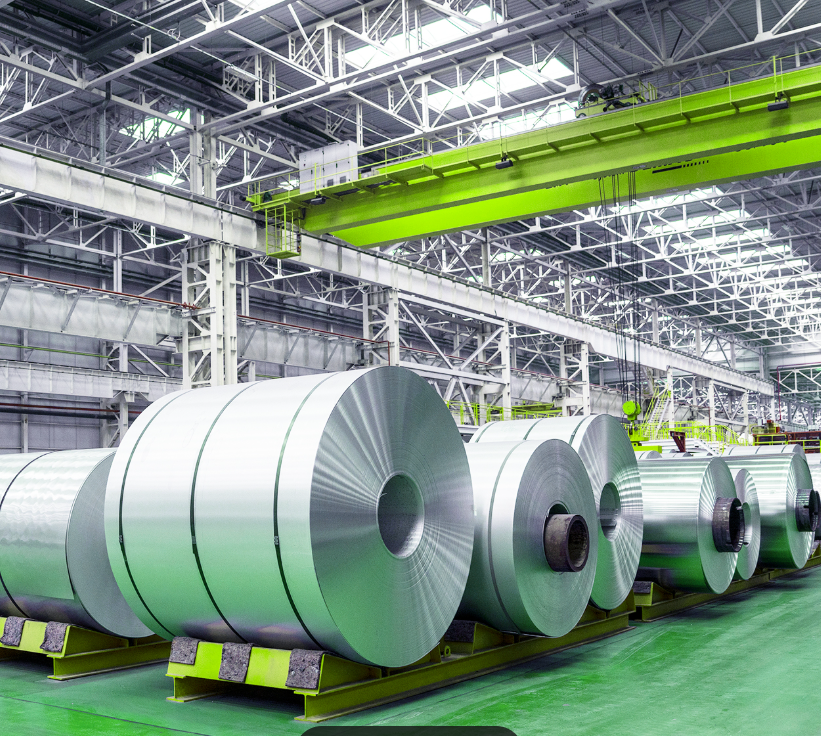What is Green Steel?
For the past two years ENECA Group has been actively involved in several industrial design projects across Europe focused on the production of green steel. These initiatives aim to transform the steel industry by reducing its carbon footprint and embracing sustainable practices.
What is Green Steel?
Green steel is produced using environmentally friendly methods that significantly lower carbon dioxide emissions. This production approach typically involves using renewable energy sources, such as wind and solar power, and recycling materials.
How is Green Steel Produced?
Green steel is produced through a combination of methods and technologies developed to lessen the environmental impact of steel manufacturing. 
Here are the main principles involved in green steel production:
- Utilization of Renewable Energy: The production process relies on renewable energy sources, including wind, solar, and hydropower.
- Green Hydrogen-Based Solutions: By substituting natural gas in the direct reduction process with green hydrogen, carbon emissions are significantly reduced.
- Recycling Scrap Steel: Green steel production incorporates scrap steel as a raw material, decreasing the reliance on primary resources and lowering the environmental footprint.
- Carbon Capture and Storage: Any remaining carbon dioxide emissions can be captured and stored, preventing them from being released into the atmosphere.
- Waste Minimization: Green steel production focuses on reducing waste through practices like recycling by-products and implementing efficient production techniques.
These approaches minimize the environmental effects of steel production, making it more sustainable. However, it is important to recognize that green steel production is still in its early stages. Steel companies plan to launch their initial plants by the late 2020s.
Transition from Traditional to Sustainable Steel Production
The steel industry is responsible for over 7% of global CO2 emissions due to conventional methods that rely heavily on fossil fuels. Transitioning from traditional blast furnace-basic oxygen furnace (BF-BOF) processes to more sustainable practices is essential for decarbonization.
Green hydrogen is generated from renewable energy and water, allowing for a significant reduction in CO2 emissions.
Industrial Plants for Green Steel Production
The transition to green steel production represents not only a technological shift but also a significant investment in new infrastructure. Steel manufacturers must plan for the construction of modern plants and ensure compliance with sustainability goals and regulatory requirements.
Key Differences in Steel Production Processes
- Elimination of Fossil Fuels: Traditional steel production relies on fossil fuels, such as coal and coke, particularly in the blast furnace process. In contrast, green steel production focuses on replacing fossil fuels with non-fossil alternatives, such as hydrogen and renewable electricity.
- Utilization of Green Hydrogen: One of the most promising methods for producing green steel involves green hydrogen, generated from renewable energy sources. This approach requires specialized equipment and infrastructure to produce, store, and integrate hydrogen into the steelmaking process, which cannot be accommodated in existing plants designed for fossil fuel use.
- Advanced Technologies: Green steel production employs advanced technologies, including electric arc furnaces (EAFs) and direct reduction processes powered by renewable energy. These technologies are different from traditional blast furnaces and require new facilities built with the appropriate specifications and capabilities.
- Enhanced Recycling Processes:The green steel approach emphasizes recycling scrap steel as a primary raw material. This shift demands facilities that are designed to handle and process recycled materials efficiently.
- Carbon Capture and Storage (CCS): While some traditional steel plants may incorporate CCS technologies, the scale, and design of new plants dedicated to green steel production will require integrated CCS solutions tailored to the specific emissions profile of the new processes.
ENECA Group is committed to advancing green steel production through innovative technologies and sustainable practices. We focus on developing design solutions that are environmentally friendly, and financially feasible.
Our services Include:
- Feasibility Studies: Assessing project viability with varied capital and operational cost estimates.
- Multi-Disciplinary BIM design Services: Delivering comprehensive design and engineering solutions.
- Structural design. Steel structures include piping supports, access platforms, stairs, gratings, equipment supports, pipe racks, and trusses. These elements are essential for safe operation and efficient maintenance of industrial systems.
- Engineering networks and Infrastructure
- EPCM Services: We offer engineering, procurement, project, and construction management services.
- Automation: Incorporating advanced technologies into the design process.
Contact us
